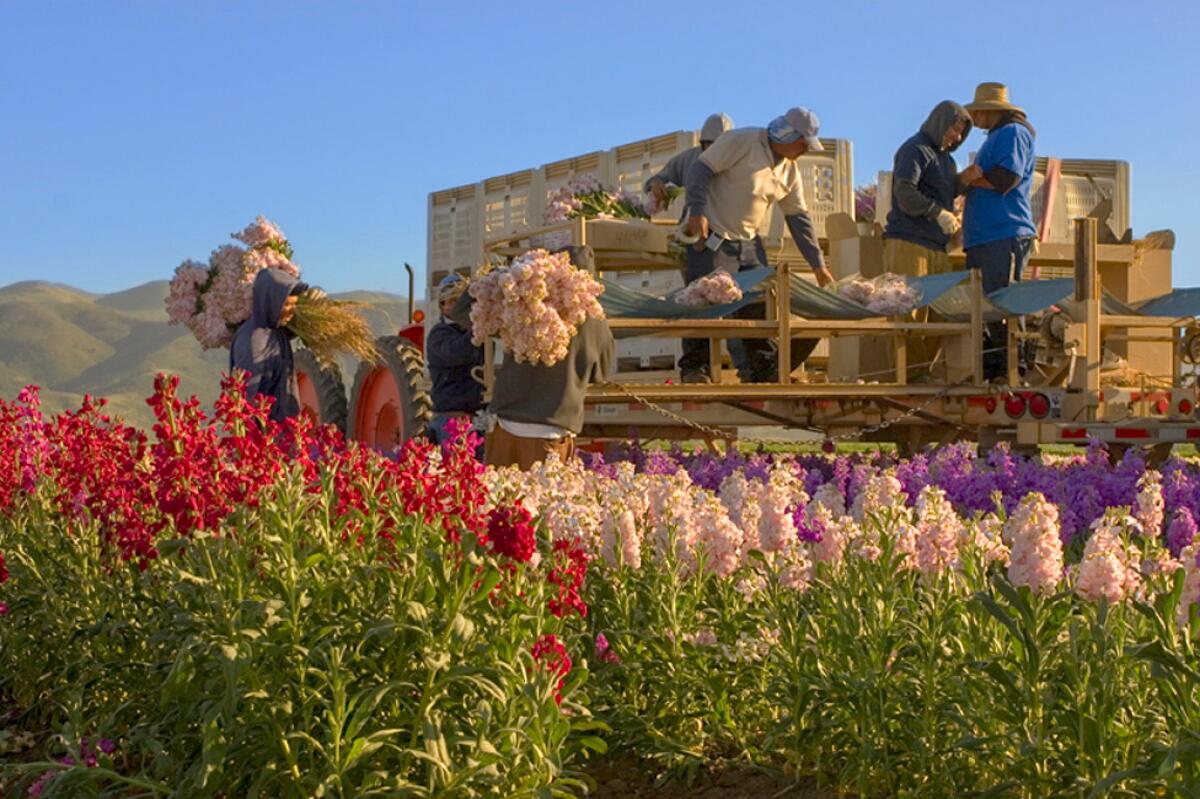California created a pension for boxers but says it struggled to find them. So we did

- Share via
Good morning, and welcome to the Essential California newsletter. It’s Friday, May 12. I’m Melody Gutierrez, an investigative reporter for the Los Angeles Times.
There’s a file folder that has followed me for two decades. It’s where I stuff reports or notes for potential stories so they don’t take up real estate in my head. I don’t remember exactly when I printed out findings from a 2005 state audit of the California Professional Boxers’ Pension Fund, but it found its way into that folder and tagged along with me through new jobs and different beats.
When I joined The Times’ investigative team late last year, that well-preserved printout made its way out of the yellowed folder for the first time.
What struck me the most was that, despite having covered sports and state government at different points in my life, I had never heard any mention of California having a pension for boxers. After four months of reporting, it’s clear that many boxers have not either.
The California State Athletic Commission, which administers the boxers’ pension, says it has struggled over the last 40 years to inform fighters of their benefits. Roughly 200 boxers could have claimed a pension last year, but only 12 of them — 6% — did so, according to a Times investigation published Thursday.
The program provides pensions to boxers who have fought at least 75 rounds in California without more than a three-year break. The amount they are owed, which is supposed to be paid when a boxer is 50 years old, is based on how many rounds they fought and the purse for those bouts.
The commission has kept a list on its website of boxers who have not claimed their pensions. I put in public records requests for the amounts owed to each boxer and how much has been paid out since it was created in 1982. Those records showed that the commission’s online list was not just dated but also incomplete — stopping at last names beginning with “S.”
I began calling boxers with unclaimed pensions in January. Some were easy to find, like Mike Jameson, who went by “Irish Mike” in the ring. Jameson, 68, was a San Jose heavyweight who logged fights against Mike Tyson, George Foreman, Randall “Tex” Cobb, Michael Dokes and Frank Bruno. Jameson has lived in the same duplex in San Jose for three decades, making him particularly easy to find.
Jameson is gregarious and quick to hug. He’s still close friends with his trainer and cornerman. I remember his reply when I told him why I was calling: “What pension?”
That was a question I heard many times. The unexpected money was always welcome news, but it was usually followed by questions from boxers about why the state hadn’t told them.
“It angers me,” said Rodney Jones, a middleweight from Stockton who retired in 2007 at 38 years old. “I was never mailed any statements. Someone told me about it, I think another fighter, but I didn’t know when to apply. ... I’m concerned for other fighters.”
Jones, 54, a left-handed contender nicknamed “Smooth,” now works as a financial coach. Since the boxers’ plan does not allow unclaimed money to gain interest, Jones is keenly aware that his $26,000 pension has been depreciating in value the last four years due to inflation.
“I’m not hard to reach,” Jones said. “I don’t think they are trying hard enough to reach out to us.”
The Times’ investigation also identified other issues, including a sizable unfunded liability and inadequate revenue.
And the findings from the investigation are already having an impact. The commission updated its website to provide a more complete list of boxers owed benefits. Officials are reevaluating whether the pension should increase revenue to address inflation — as some say state law currently requires — and are offering additional payment options to boxers who say lump-sum payouts jeopardize their government benefits.
You can read our full coverage of this issue here:
- Full story: California created the nation’s only pension for aging boxers. But it’s failing to deliver.
- Alex Ramos helped other boxers apply for their pensions, but his own is out of reach.
- Could you have a California boxers’ pension? Here is what you need to know.
And now, here’s what’s happening across California from Laura Blasey:
Note: Some of the sites we link to may limit the number of stories you can access without subscribing.
L.A. STORIES
During a winter full of atmospheric rivers, the last line of defense keeping the city’s trash from flowing into the Pacific was Ballona Creek Trash Interceptor 007. The interceptor collected 77 tons of garbage, surpassing expectations. Los Angeles Times
In February 2020, Gregg Garfield became the first person in Los Angeles County — and one of the first people in the country — to contract COVID-19. He was admitted to the ICU at Providence Saint Joseph Medical Center in Burbank with a 1% chance of survival. He not only survived but also returned to the hospital this week to visit with the staff who helped him live. Los Angeles Daily News
POLITICS AND GOVERNMENT
The Supreme Court on Thursday upheld an animal-welfare law approved by California’s voters, ruling that the state does not violate the Constitution when it restricts the sale of pork that is produced by the cruel confinement of breeding pigs. Los Angeles Times
U.S.-Mexico border towns are bracing for the impact of Title 42’s expiration as migrant arrivals push capacity limits. Most U.S. Customs and Border Protection facilities were already over capacity, and more people were expected to arrive Thursday. Los Angeles Times
Republicans who live in liberal bastions like San Francisco are used to feeling sidelined. But a quirk in how the state Republican Party awards delegates in presidential primaries could give these GOP voters a greater voice than their counterparts in more conservative areas in picking their party’s presidential nominee in 2024. Los Angeles Times
A controversial proposal in Half Moon Bay would almost entirely ban feeding wild birds on all public and private property. Proponents say some bird populations, such as crows and ravens, have gotten out of control and are exhibiting “harassing” behavior. Critics, however, are balking at what they say is government overreach into their backyard bird feeders. San Francisco Chronicle
Support our journalism
HEALTH AND THE ENVIRONMENT
Last year, the 200-acre Coastal fire swept through Laguna Niguel, destroying 20 homes and damaging others. Residents are eager to start rebuilding, but the process is proving to be more complicated and emotional than they’d imagined. O.C. Register
CALIFORNIA CULTURE
Tetris, Air Jordans, Blackberries and Flamin’ Hot Cheetos — why is Hollywood making so many movies about stuff these days? For a variety of reasons, writers say, these kinds of stories have become an easy sell to financers and viewers alike. Los Angeles Times
Is San Francisco entering a “doom loop”? GOOD, some say. Not everyone is sad to see big companies and the tech industry pull back — in fact, some residents are hoping for their departure and with it a corresponding drop in rents. San Francisco Chronicle
This man is not Meghan of Montecito. That may seem obvious to some, but as photos trickled out of King Charles’ coronation festivities over the weekend, the internet conspiracy machine kicked into high gear to put out a quirky (and false) rumor: The duchess of Sussex, who opted to remain in California, had actually donned a disguise to attend in secret. Washington Post
Free online games
Get our free daily crossword puzzle, sudoku, word search and arcade games in our new game center at latimes.com/games.
AND FINALLY
Today’s California memory is from Helen Hartel, of Agoura Hills, who wanted to highlight California’s flower fields and those who work in them.

Helen writes:
“A road trip to Lompoc became much more than I had imagined when I came upon this commercial field where the harvesting of stock [flowers] was taking place. The hills in the background, the vibrant colors of the flowers, and the method of gathering and packaging the flowers thrilled me, and all of this glory was seen from the side of the road when I impulsively parked my car because of the grandeur.”
If you have a memory or story about the Golden State, share it with us. (Please keep your story to 100 words.)
Please let us know what we can do to make this newsletter more useful to you. Send comments to [email protected].
Sign up for Essential California
The most important California stories and recommendations in your inbox every morning.
You may occasionally receive promotional content from the Los Angeles Times.




